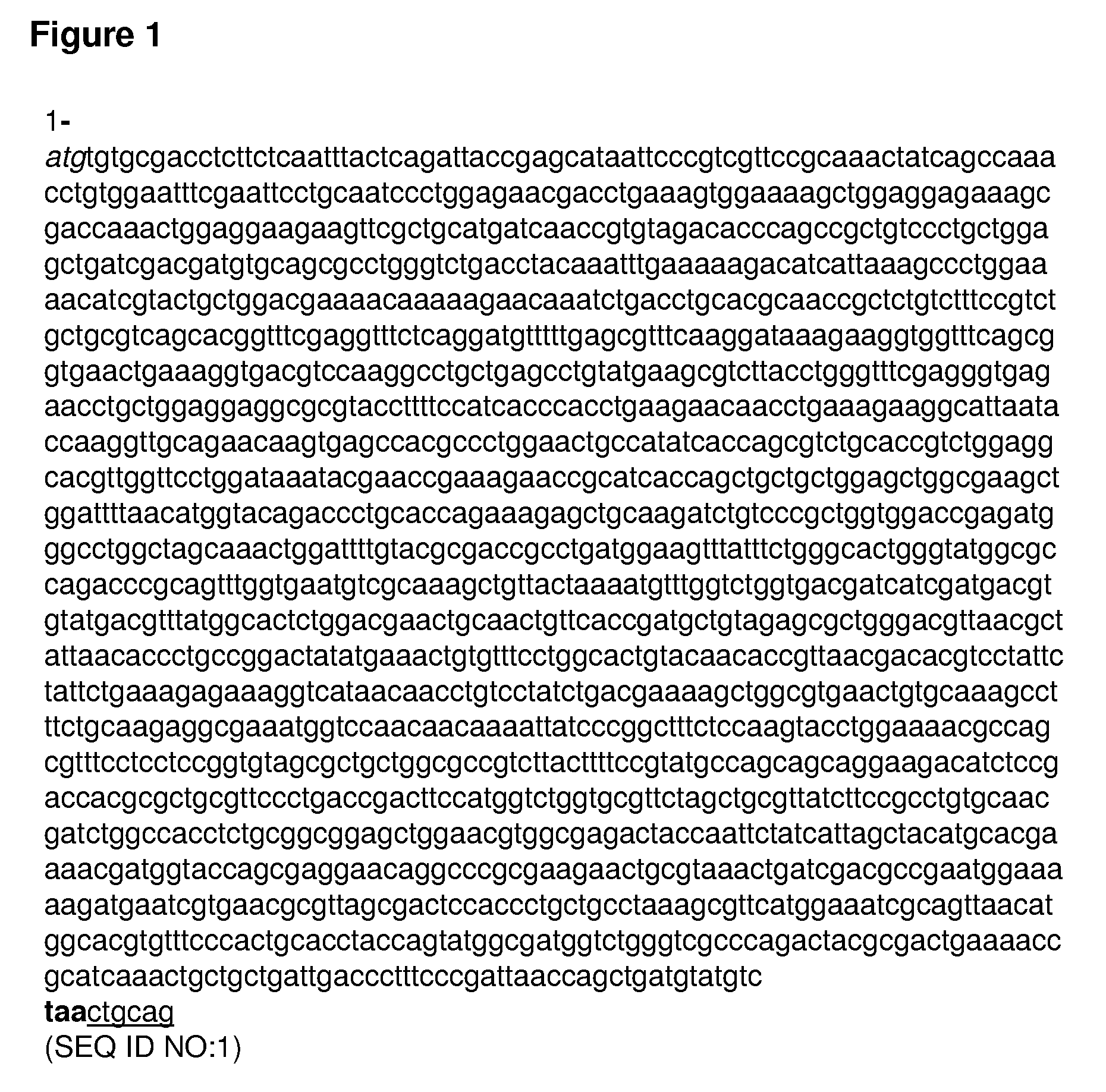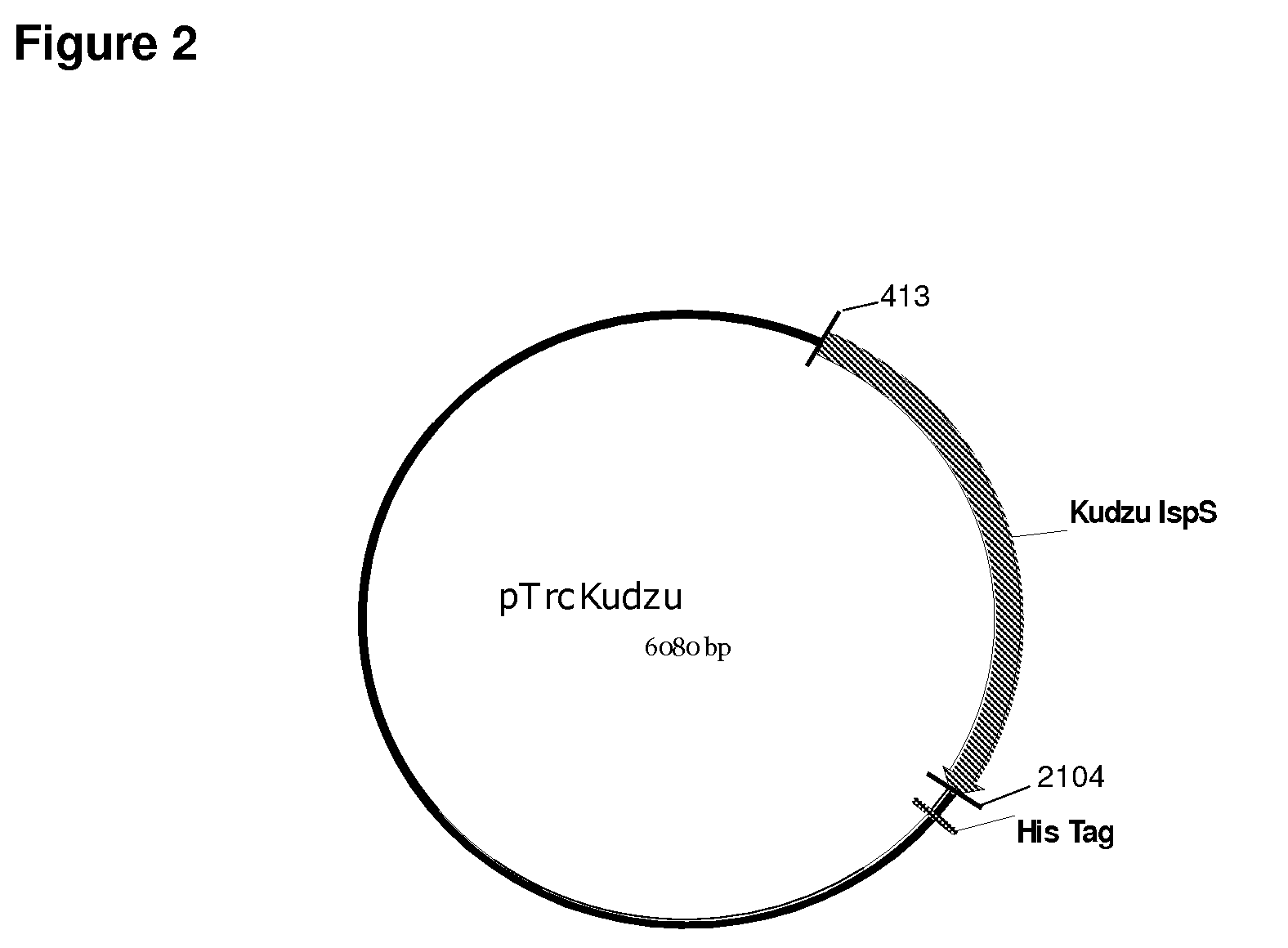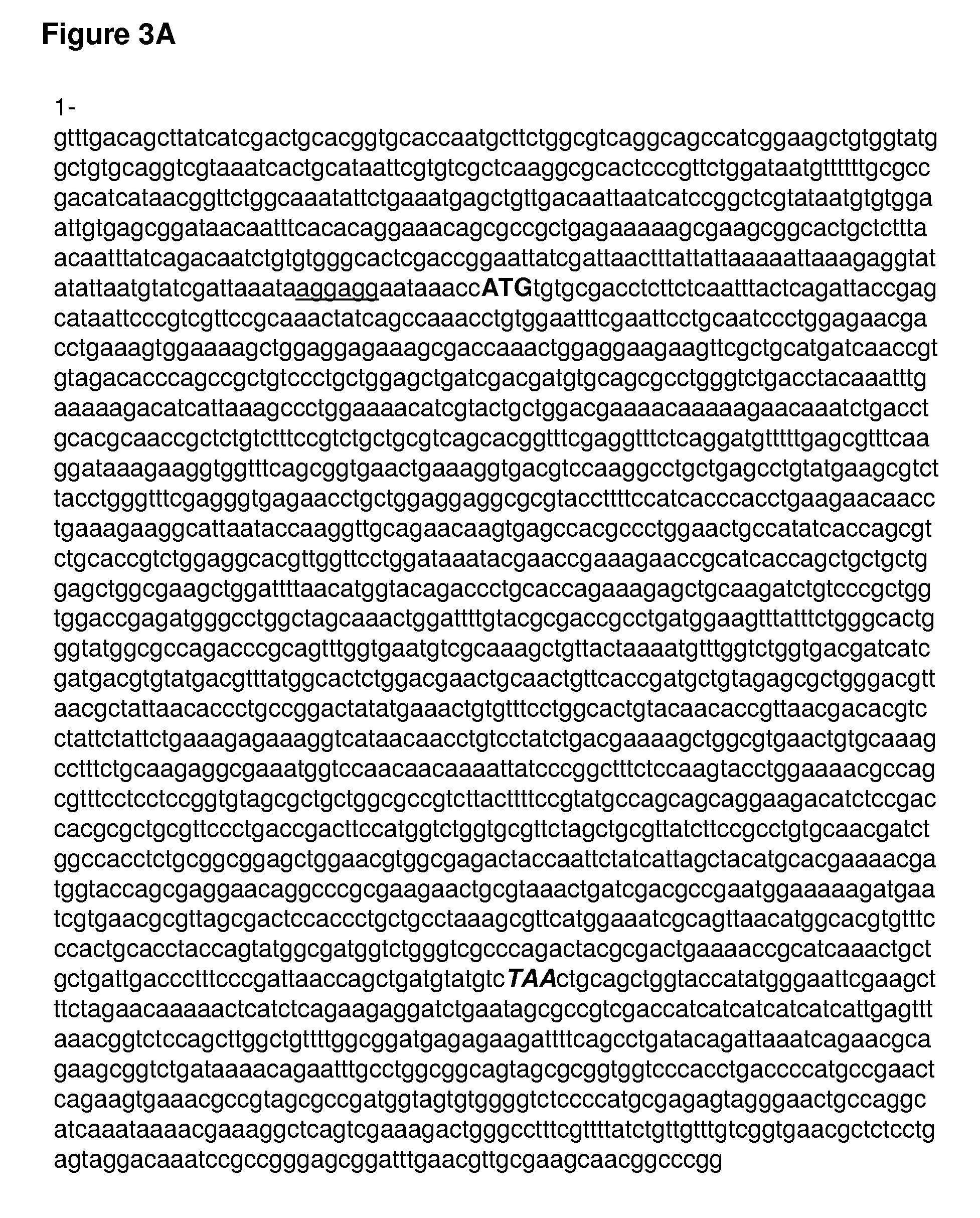Systems using cell culture for production of isoprene
a technology of cell culture and isoprene, which is applied in the field of systems using cell culture for isoprene production, can solve the problems of high cost, time-consuming, and unattractive yield of isoprene from naturally occurring organisms
- Summary
- Abstract
- Description
- Claims
- Application Information
AI Technical Summary
Benefits of technology
Problems solved by technology
Method used
Image
Examples
example 1
Production of Isoprene in E. Coli Expressing Recombinant Kudzu Isoprene Synthase
[0482]I. Construction of Vectors for Expression of the Kudzu Isoprene Synthase in E. coli
[0483]The protein sequence for the kudzu (Pueraria montana) isoprene synthase gene (IspS) was obtained from GenBank (AAQ84170). A kudzu isoprene synthase gene, optimized for E. coli codon usage, was purchased from DNA2.0 (SEQ ID NO:1). The isoprene synthase gene was removed from the supplied plasmid by restriction endonuclease digestion with BspLU11I / PstI, gel-purified, and ligated into pTrcHis2B (Invitrogen) that had been digested with NcoI / PstI. The construct was designed such that the stop codon in the isoprene synthase gene 5′ to the PstI site. As a result, when the construct was expressed the His-Tag is not attached to the isoprene synthase protein. The resulting plasmid, pTrcKudzu, was verified by sequencing (FIGS. 2 and 3).
[0484]The isoprene synthase gene was also cloned into pET16b (Novagen). In this case, t...
example 2
Production of Isoprene in E. Coli Expressing Recombinant Poplar Isoprene Synthase
[0493]The protein sequence for the poplar (Populus alba×Populus tremula) isoprene synthase (Schnitzler, J-P, et al. (2005) Planta 222:777-786) was obtained from GenBank (CAC35696). A gene, codon optimized for E. coli, was purchased from DNA2.0 (p9796-poplar, FIGS. 30 and 31). The isoprene synthase gene was removed from the supplied plasmid by restriction endonuclease digestion with BspLU11I / PstI, gel-purified, and ligated into pTrcHis2B that had been digested with NcoI / PstI. The construct is cloned such that the stop codon in the insert is before the PstI site, which results in a construct in which the His-Tag is not attached to the isoprene synthase protein. The resulting plasmid pTrcPoplar (FIGS. 32 and 33), was verified by sequencing.
example 2b
Demonstration of Isoprene Synthase Activity from Several Populus Isoprene Synthases
[0494]The following isoprene synthases were examined; Populus alba (Accession number BAD98243; FIGS. 137A and B; SEQ ID NO:109), Populus nigra (Accession number CAL69918; FIGS. 137C and D; SEQ ID NO:110), Populus tremuloides (Accession number AAQ16588; FIGS. 137 E, F, and G; SEQ ID NO:123), Populus trichocarpa (Accession number ACD70404; FIGS. 137H and I; SEQ ID NO:111), Populus alba×Populus tremula (Accession number CAJ29303; FIGS. 137J and K; SEQ ID NO:112), and MCM112-Kudzu.
[0495]pET24Kudzu (also referred to as MCM112) was constructed as follows: the kudzu isoprene synthase gene was subcloned into the pET24d vector (Novagen) from the pCR2.1 vector (Invitrogen). The kudzu IspS gene was amplified from pTrcKudzu template DNA using primers MCM50 5′-GATCATGCAT TCGCCCTTAG GAGGTAAAAAAACATGTGTGCGACCTCTTC TCAATTTACT (SEQ ID NO:31); and MCM53 5′-CGGTCGACGGATCCCTGCAG TTAGACATAC ATCAGCTG (SEQ ID NO:32). PCR re...
PUM
| Property | Measurement | Unit |
|---|---|---|
| Concentration | aaaaa | aaaaa |
| Density | aaaaa | aaaaa |
| Temperature | aaaaa | aaaaa |
Abstract
Description
Claims
Application Information
 Login to View More
Login to View More - R&D
- Intellectual Property
- Life Sciences
- Materials
- Tech Scout
- Unparalleled Data Quality
- Higher Quality Content
- 60% Fewer Hallucinations
Browse by: Latest US Patents, China's latest patents, Technical Efficacy Thesaurus, Application Domain, Technology Topic, Popular Technical Reports.
© 2025 PatSnap. All rights reserved.Legal|Privacy policy|Modern Slavery Act Transparency Statement|Sitemap|About US| Contact US: help@patsnap.com



